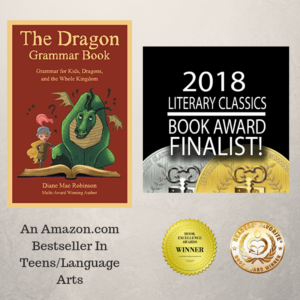
How Can I Get My Child Interested In STEM?
Children are naturally curious. In fact, children are capable of understanding science, technology, engineering, and math (STEM) subjects before they’re even a year old. But, like other concepts, STEM skills need to be intentionally developed as a child grows.
Children are capable of complex thinking skills prior to being able to speak, but different types of play are critical to develop skills related to STEM fields. These skills include questioning, analysis, and curiosity.
Unfortunately, many children in the U.S. aren’t getting the play and stimulation they need to develop these critical skills.
Up to 40% of American children aren’t ready for kindergarten and only 34% of kids in Grade 4 were proficient in science on the National Assessment of Educational Progress.
These numbers don’t reflect the child’s interest in learning. According to the National Research Council, children have developed their own ideas about the social, biological, and physical worlds and how they work before they enter school. Educators, including teachers and parents, can develop these ideas by taking the child’s thoughts seriously,listening to the child, and building on what they already know and are able to do. But why is it important to get your child interested in STEM in the first place? Isn’t it enough for a child to goto school and learn about STEM fields in class?
Setting the Stage for a Successful STEM Education
STEM is an acronym that stands for Science, Technology, Engineering, and Mathematics. Although your child learns about science and mathematics in school, STEM isn’t a single educational program or subject.
General STEM subjects are often included throughout your child’s school curriculum, but programs inengineering and technology are lacking. It may not be until middle or high school that your child learns about engineering and technology. Researchers say that an early education in mathematics and other STEM fields can improve a child’s learning abilities and narrow the gaps between children’s educational achievements. By making STEM interesting to a child at a young age, you can improve their chances of greater success later in life. Since 1990, employment in STEM fields has jumped from 9.7 million to 17.3 million, or 79%. And, compared to non-STEM occupations, those in STEM occupations earn up to 26% more on average. Unfortunately, adults may curb or even crush the enthusiasm a child has for exploring STEM fields. This is often done in one or more of three ways including fear, disapproval, and absence. When a child is afraid of new things, they’ll stay in their comfort zone and be unwilling to explore the world around them. This effectively crushes their curiosity.

Disapproval such as biases and attitudes can also keep a child from exploring and developing STEM skills. In fact, disapproval is one of the top reasons why there are so few women in male-dominated areas of STEM.
Only 14% of those in the field of engineering and only 15% of those in computer science are women. Compare these numbers to the 47% of those in life science and 75% of those in healthcare that are women.
Because these areas of study are often lead by men, girls are often pushed to stop developing STEM skills and to turn to other areas. Even those who don’t receive disapproval may be affected the absence of an invested and caring adult or role model. A caring adult provides a sense of safety to the child to explore new things. It also gives them the ability to share their discoveries, thereby giving them the positive reinforcement they need to continue making those kinds of discoveries. How can you be a caring adult to your child and cultivate their curiosity and other skills that would get them interested in STEM?
Stimulate Your Child’s Curiosity With Science
One of the best things about getting your child interested in science is that
there are many different kinds of activities you can do together that are not
only fun but also simple. Here are a few activities you can do with your child
to get them invested in science from a young age:
Explore the great outdoors. You don’t need to be a fan of camping to teach
your child about the great outdoors. Kids love to explore and you can find
plenty of things to teach them about right in your own backyard. From grass
to water, soil to rocks, there are plenty of natural materials they can learn about.
Let your child safely interact with animals. Some animals don’t do so well with
small children, but others are kid-friendly. Consider teaching your child about the
biology of your family dog, the fish at their doctor’s office, or the sheep at your local
petting zoo.
Encourage your child to ask “what” questions. You may be tempted to
encourage your child to think about science by asking “why” questions, but this
isn’t always the best idea. “Why” questions can give the impression that there’s a
right or wrong answer, which can keep them from wanting to answer at all.
Instead,encourage your child to ask “what” questions such as “What happened
here?” and “What have you changed?”
Give your child four ways to play. There are four different types of play
that can help to boost your child’s science skills. These include pretend play,
exploratory play, guided play, and free play. Pretend play is when your child
uses their imagination and exploratory play is when your child can experiment
and take things apart. Guided play is when you, an adult, interact with your child,
and free play is when an adult isn’t involved.
Conduct fun experiments with your child. Some science experiments your child
can’t do on their own. The good news is that they’re fun and simple to do together.
Consider making a lava lampwith your child, creating a leak-proof bag, and even
walking water.
Teaching Tech Through Technology Activities
Technology activities are activities that help children learn how to use technology to solve problems. They teach kids how to use technology for logical and helpful reasons rather than just to socialize and have fun.
These activities can include weather technology, science equipment, computers,
and more. You can help your child learn more about technology and how they can
use it in the following ways:
Cut out shapes with scissors. There are several shapes drawn on a piece of
paper.
How can your child get these shapes out? By carefully using a pair of children’s
scissors,
your child can learn how to use technology to cut out different shapes from the
paper.
Build a house of cards. By building a house of cards, your child can learn about
what holds the cards up (friction) and why they might slip or fall. You can also
conduct experiments with the cards. For instance, would using baby powder on
the cardsincrease or reduce friction? Sprinkle baby powder over the cards to see
how it changes your ability to stack them. Try adding small weights like coins, too.
Play logic games. Fun brain teasers, puzzles, and logic games can help your
child develop greater problem solving skills. They’re learning about different ways
to solveproblems, both physically and mentally, which can help them develop
solutions to similar problems later in life and in other activities.
Take a picture of a block structure and have your child replicate it. This is a
visual exercise in technology where your child uses replication. They’re able to
look at thestructure in the picture, analyze it, and determine which blocks go where
to problem solve and build the structure themselves.
Create a scavenger hunt with a map. Kids like scavenger hunts, but you can
makethe game that much more educational by using a map. Your child can learn
how to usethe map to find different locations, where the objects are relative to their
spot, and how to get to them.
Entertaining with Engineering: Learning How
Things Work

Your child has learned how to use technology to solve problems, but now it’s time
they learn about why that technology solves their problem. Engineering is crucial to
teach your child at a young age because they won’t be exposed to it until their later
years in school when their interest in STEM may have already been crushed.
Here are a few ways you can get your child into the interesting and entertaining
world of engineering:
Teach them about levers and pulleys. Levers and pulleys are some of the first
things you’ll learn about engineering as a child. They’re also some of the most
simple types of engineering projects to make and learn about. Consider introducing
your child to gears, wheels, and pulleys. Then make a pulley system with your child
using string and a spool.One of your child’s smaller toys can be used as a weight.
Plan and design a structure with blocks. In the previous section, we
mentioned an activity where your child looked at a picture of a block
structure and replicated it using their own blocks. Now, have your child
design their own structure on a piece of paper with the blocks they have.
Using their own instructions, have your child build the structure they’ve
designed.
Build a ramp. Like building with blocks, help your child design a small
ramp structure for one of their toys. This works best for small remote
control cars. With a ramp, you can not only design and build the structure
but you can also determine which heights and angles work best for the ramp.
Don’t Miss Out On Math Activities
Many children don’t like math when they get older. This is often because mathematics can be challenging. Unfortunately, math’s difficulty can often cause children to become frustrated and believe they’re not good at the subject even if their grades are fair.
You can help to curb this frustration and make math more manageable
using certain activities to stimulate their problem solving skills. Here are
a few math-centric activitiesto give your child’s skills a boost.
Baking. Concepts are always more fun when you can see the end result.
Through baking, you can teach your child the importance of counting and
using the right measurements of certain ingredients to bake a cake,
cupcakes, or cookies.
Pretend play with monetary value. Pretend play is great for math activities.
Have your child pretend to be a cashier or a waiter/waitress and you pretend
to be a buying customer.Have certain objects set up for the game with specified
prices. Your child can then sell anitem to you and give you change or add the
prices together.
Play addition and subtraction games while waiting. Oftentimes, your child
will want to play a game with you in the car or while you’re waiting for food at
a restaurant. Rather thanplaying the classic I-Spy, consider playing an
addition and subtraction game. Take turns soyour child feels on equal ground
with you in terms of problem solving. Not only will this helpyour child with their
own math skills, but it can also keep your mind sharp as well. You never know
when your child will ask a hard question!
It’s never too late or too early to help your child discover a love for STEM. The
earlier you encourage your child to embrace their natural curiosity and wonder
about the world, the easier it will be to create a positive attitude about STEM
and forge their foundational skillsfor future STEM success.
You can keep your child involved in STEM by engaging them in everyday
STEM activities like cooking, buying food, building with legos, and more.
Do fun experiments, go exploring,and visit museums that encourage your
child to learn and grow.
Whether or not your child decides to go into a STEM career later in their
life, they can use the problem solving skills and techniques they learn
through STEM activities and conceptsin every aspect of their lives.
After all, the goal of STEM isn’t to push your child toward any one career
but to get them ready for the future lives they want to lead.
Repost with permission from Stem https://www.dinolite.us/blog/how-can-i-get-my-child-interested-in-stem/





![The Dragon Grammar Book: Grammar for Kids, Dragons, and the Whole Kingdom by [Robinson, Diane Mae]](https://images-na.ssl-images-amazon.com/images/I/41mMwUWh5wL.jpg)
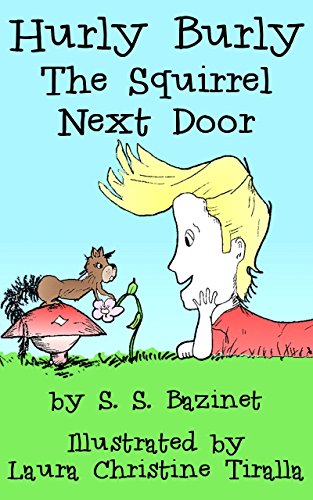



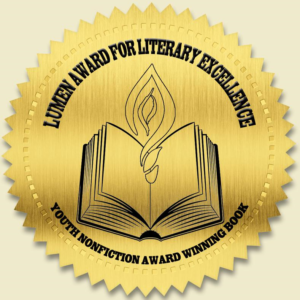
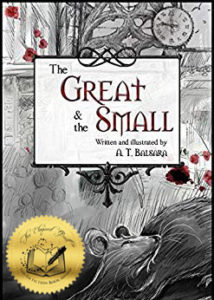
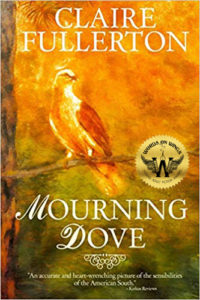
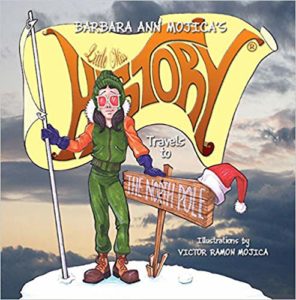 Little Miss HISTORY Travels to The NORTH POLE
Little Miss HISTORY Travels to The NORTH POLE About the Author: Barbara Ann Mojica is a historian and retired educator. She writes historical articles for the Columbia Insider under the banner “Passages.” Using the whimsical Little Miss History character, Barbara hopes to inspire children to learn about historical people and places. Little Miss History’s antics make reading nonfiction a fun-filled adventure for all ages.
About the Author: Barbara Ann Mojica is a historian and retired educator. She writes historical articles for the Columbia Insider under the banner “Passages.” Using the whimsical Little Miss History character, Barbara hopes to inspire children to learn about historical people and places. Little Miss History’s antics make reading nonfiction a fun-filled adventure for all ages.